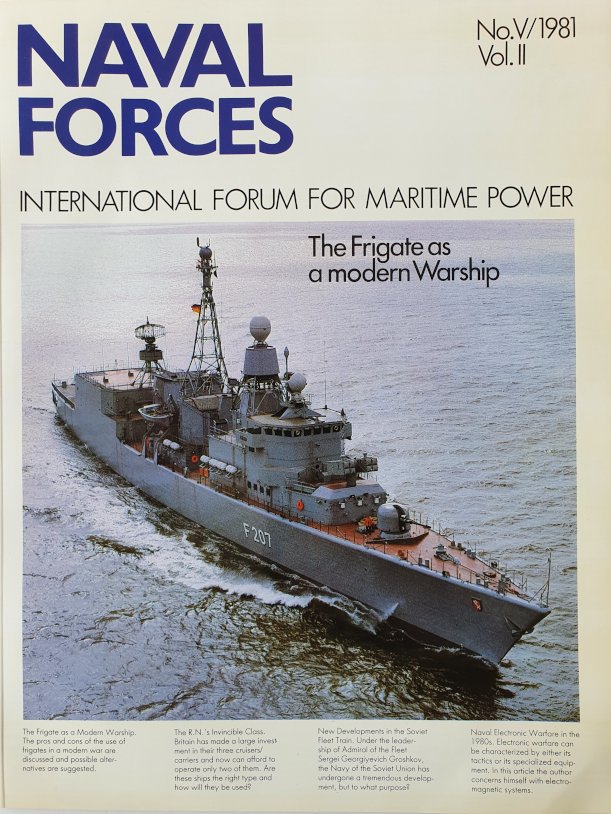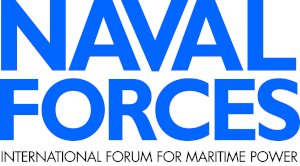Navies remained first and foremost instruments of national policy in the early 1980s. At that time, the “modern” frigate became an instrument of sea power. When Naval Forces V went to print in the late summer of 1981, the Western European navies possessed some 90 frigate-type warships in 18-20 ship classes. However, European NATO navies would never have attained the size and sophistication they needed to counter a steadily growing Soviet high seas fleet. Western European navies at that time were concerned with more traditional roles, particularly protection of the sea lines of communication, the protection of forces ashore, ‘gun-boat diplomacy’ and naval presence. In a seven-page article that appeared in Naval Forces V/1981, entitled The Frigate as a Modern Warship, F. de Blocq van Kuffeler, a retired officer of the Royal Netherlands Navy, examined the value and raison d’être of the frigate in a modern war, stating that, with the disappearance of the corvette from the strength of Western navies in the 1970s, the development of the frigate into an even larger, more heavily armed – and therefore expensive – combatant was an urgent requirement. The frigate was found to be an instrument of sea power – however, lacking the multifunctionalities of today’s ships.
One of van Kuffeler’s conclusions was that from the early 1970s, these ships have proved to be so expensive that it became necessary to drop the so-called “general purpose” frigate, and to design and build two classes – sometimes on the same type hull design – for anti-submarine warfare and air defence. Over the decades, this survived in a number of ship classes. Hence, at the beginning of the 1980s, NATO was scoping out different options for its future next-generation frigates. NATO had yet to move forward with new plans for ‘multifunctional’ ships, perhaps combining different national approaches in a single hull. Due to the emergence of a more powerful and high seas-capable Soviet fleet along with a considerable land-based naval aviation capability, NATO was convinced that the inability to react appropriately with existing assets must be overcome by increased multinational naval cooperation, e.g. by adopting a new standard frigate by NATO navies. The NATO Frigate Replacement programme was borne, originally consisting of six European participants plus the United States, and a requirement for 52 modern frigates. The prefeasibility study ran from February 1981 to October 1982. Unfortunately, the entire project was cancelled in January 1990. Most partners reverted to national procurement solutions. It was the end of the Cold War that ushered in an unprecedented era of naval cooperation as a growing number of nations (including former adversaries and non-aligned) became interested in collaboration with the US Navy and other NATO member states.






